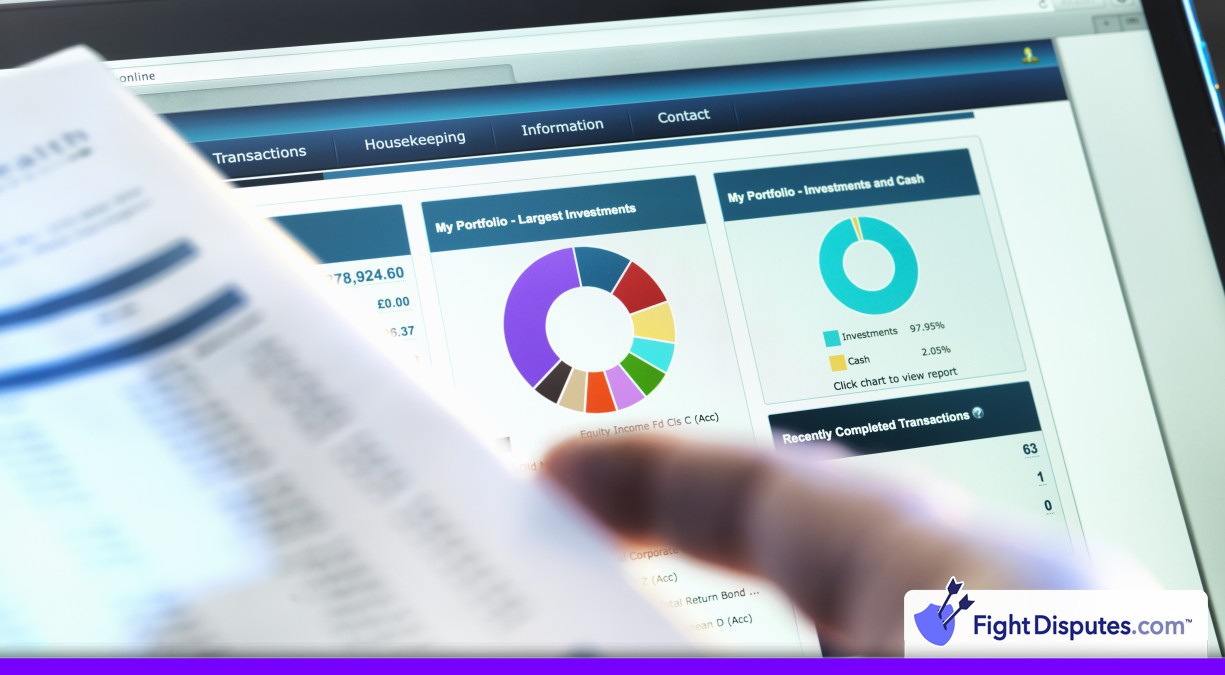What is an Excessive Chargeback Merchant (ECM)?
Mastercard has its own label for businesses that get chargebacks – they call them “excessive chargeback merchants” or ECMs. This compliance status can threaten your ability to accept credit card payments at all and it’s obviously a big problem for any business. If Mastercard places you on their ECM list, you’re going to get hit with financial penalties that just get worse over time.
The monthly fines alone will run about $5,000 right from the start and that’s only the beginning. Those penalties like to increase the longer you stay on their watch list – we’re talking $25,000 per month or more depending on your situation. The actual issue is that your payment processor will probably start to feel nervous about working with you at all. They might freeze your funds with little warning or worse, they’d cut ties with you completely and leave you to find a new way to manage payments. I see this pattern all the time with businesses that get flagged.
The ECM program is Mastercard’s way to protect the entire payment network from merchants who create too many disputes. They monitor each merchant’s chargeback ratio every month and automatically flag anyone who crosses their thresholds. The whole process runs on autopilot, so nobody reviews the decisions to flag merchants.
The math behind it is pretty simple but the consequences can hit your business very hard. If more than 1% of your total transactions turn into chargebacks for 2 months in a row then you’ll probably be on the ECM list. Once you’re on there, you have to get your chargeback numbers down fast or else you’ll have even steeper penalties that keep going up month after month.
Most merchants have no idea that there’s even a problem until the penalty lands in their inbox. Once that happens, you’re already in the program and the clock is ticking on those expensive monthly fines. Your payment processor will also start to ask tough questions about your business practices and may ask you to work with a dedicated chargeback management company to help bring your numbers back under control.
How It Works
Mastercard has numbers they keep an eye on that will automatically flag merchants as risky. We’re talking about 100 chargebacks and about a 1.5% chargeback ratio within a single month. Hitting these 2 limits at the same time will officially get you called an Excessive Chargeback Merchant.
Once you cross that line, Mastercard reaches out to your merchant bank first to give them a heads-up about what just happened. Your bank then gets the unpleasant job of breaking the bad news to you and this uncomfortable conversation usually takes place within just a few days after the month ends. After that whole process you can expect to receive an official letter that breaks down your new status and walks you through what your next steps are going to be.
The penalties will start almost right away. Your 1st month in the program will cost you $1,000 in fines. Month 2 will jump to $2,000 and by month 3 you’re looking at $5,000. These fees add up fast and get pulled right from your merchant account.
When your chargeback numbers get even worse, you could end up with HECM status. That stands for High Excessive Chargeback Merchant and this happens when you go over 300 chargebacks along with a 3% ratio. The monthly fines for HECM merchants start at $10,000.
Each month that you stay in the program the situation gets harder to fix. After 6 months, Mastercard might tell your bank to drop you completely. Most merchants don’t actually make it to that 6-month mark though. The rising fines and operating restrictions usually force them to either solve their chargeback problems or to close their doors before matters get that bad.
How it Affects Chargeback Prevention
Once a business hits excessive chargeback merchant status, the financial pain starts right away. Card networks will hit you with big fines that can quickly reach 1000s of dollars every month. Those penalties continue piling up month after month until you fix the underlying problem and get your chargeback ratio back below their threshold.
Those fines are actually just the tip of the iceberg though.
Your payment processor is almost certainly going to demand that you set up a reserve account where they more or less hold onto a large portion of your revenue as collateral. They’re trying to protect themselves in case your chargeback problem gets even worse and it means that you’ll have far less cash flowing through your business at the worst possible time. Some processors might freeze your account completely or tell you to look elsewhere for payment processing.
The true nightmare starts once you need to find a new payment partner. Once word gets around about your ECM status most other processors will see you as high risk. The few that are willing to work with you are going to charge premium rates and make you agree to all kinds of strict conditions. You’ll wind up paying much higher transaction fees and having to put up with longer hold times on your money.
Banks and processors will also ask you to submit complete remediation plans that explain how you’ll bring down your chargeback rates and stop future problems. Now you’re stuck with extra paperwork and non-stop checks of each transaction going through your system.
The damage stretches much further than payment processing problems. Your business reputation takes a hit and hurts your vendor relationships and customer trust for years to come.
Example Scenarios
A merchant can find themselves in some big chargeback problems much faster. Businesses that launch new products without testing see this pattern. Everything looks fine at the beginning with chargebacks around 0.5% in the first month. But then unhappy customers start calling their banks to dispute purchases. The chargeback rate jumps to 1.2% and climbing – the third month they’re looking at 2.4% and then their payment processor sends them that unwelcome ECM letter.
Subscription services see the same problem when they make it too hard to cancel accounts. Some businesses hide the cancellation process deep on their website where customers can’t find it. Customers want to quit the service but can’t find that cancel button anywhere. They try calling customer service but wind up waiting on hold for what seems like forever. Eventually they just give up and call their bank directly to dispute the charges instead.
What might start out as just 5 chargebacks in the first month can quickly turn into 20 disputes in month 2. Then it’s 40 in month 3. Before anyone notices the pattern they’ve already crossed that 1% threshold and entered problematic territory.
Seasonal businesses face their own version of this same problem. These businesses might work comfortably at around 0.3% for most of the year. Then peak season arrives with a large volume of orders and temporary workers who don’t know the processes yet. Quality control begins to slip and delays build up one after another. The next month brings a wave of disputes from frustrated customers who never got their orders on time. That one bad month can trigger ECM status and create problems for the business over the next 6 months as they work hard to get back on track.
Requirements and Timeframes
A merchant gets put into the excessive chargeback program the instant they cross that threshold. Card networks run these calculations each month like clockwork. Your payment processor will usually reach out within the first week after they crunch those numbers.
Costs get pretty expensive for merchants at this point. Your first month in the program actually acts as a grace period with no fines attached to it. Once you hit month 2 the financial penalties start to kick in hard. Most merchants see fines somewhere in the $1,000 to $5,000 range during that second month. Stay in the program any longer and those penalty amounts climb fast. By month 4 you could already be looking at penalties of $25,000 or more each month – that’s just the start of your problems though.
Once your processing bank sends you that compliance notification you need to act fast. You have just 10 business days to put together a solid remediation plan and get it back to them – there are no extensions or exceptions on that timeline. The bank wants to see just how you’re going to fix whatever compliance issue triggered the whole situation and frankly ignoring it or putting it off until next month just won’t work. What they’re actually looking for is a full rundown of each step that you’ll take to solve the problem with helpful timelines and measurable goals that they can track as you work through the entire remediation process.
To leave the program you need to stay below the threshold for 2 or 3 consecutive months and each card network has different requirements for leaving. Even after you qualify to leave you can expect your acquirer to still have you on probation for another few months. They’ll watch your chargeback numbers very closely and might hold extra reserves from your settlements as added insurance.
The requirements can change over time too. Mastercard and Visa update their chargeback programs from time to time so check with your acquirer for the latest details.
Frequently Asked Questions
What happens if my merchant account becomes ECM designated?
Payment processors don't mess around when they label you as an excessive chargeback merchant. The consequences hit fast and can be tough for your business. The financial penalties alone can really hurt your budget. You'll face a $1,000 fine in the second month that you're on the list and the penalties only get steeper from there.
The fines are only the beginning of your problems though.
Your bank is going to want a remediation plan that shows in detail how you're going to fix these chargeback issues. What they're mainly looking for are the hard facts, easy timelines and actions that prove you're taking the matter to heart and actually know how to turn it around. In most cases they'll also set up what's called a processing reserve, their way of holding back some of your incoming payments as backup against any more chargebacks that might roll in later.
The scrutiny can get pretty intense too. Your bank will watch every transaction very closely and question anything that looks even slightly unusual. They'll want regular reports and updates on whatever progress you're making. Some processors will even assign dedicated account managers to keep a closer eye on merchants that they see as high risk.
The worst part is not being able to turn the situation around fast enough. Payment processors don't have unlimited patience with excessive chargeback rates. Not cutting back on your chargebacks within just a few months means that they'll close your merchant account altogether. Once that happens you'll have a hard time finding another processor that's willing to take you on.
How long does ECM status last?
When a business gets flagged as an excessive chargeback merchant, the positive news is that you can get out of it. You'll need to get your chargeback rate down below 1.5% and your total monthly chargebacks under 100.
You can't simply hit those numbers once and call yourself safe though. Most card networks want to see you stay at these levels for at least 2 or 3 months in a row.
The timeline changes based on which card network flagged you in the first place. Visa might want to see 2 clean months while Mastercard could ask for 3. Your payment processor can talk with you about the exact requirements for your situation.
Watch out for slipping back into excessive chargebacks after you've made it out though. Landing back in the excessive chargeback category after you've already escaped means the penalties jump straight to a much higher level. You won't get the same grace period or lower fees that you had the first time around.
What's the difference between ECM and HECM status?
Payment processors split excessive chargeback merchants into 2 levels with very different consequences for your business. The first level kicks in at 100 chargebacks and a 1.5% ratio - and the card networks start flagging your account as a possible problem at that point.
The second level is way worse than that. Once you cross 300 chargebacks with a 3% ratio you become what they call a "high excessive chargeback merchant." The difference between these 2 levels is pretty big - think about the difference between receiving a warning letter and an immediate suspension.
Once your account gets flagged with excessive chargeback status, the penalties become even stricter than what you'd see with a standard high-danger merchant account. Payment processors really don't play around at this level and they won't give you much time to fix whatever's been causing all these chargebacks in your business. Most of them will shut down your merchant account within a few days because they can't afford that exposure.
Standard excessive status gives you some room to put changes and improvements in place. Monitoring programs and extra fees are part of the territory. Most processors will give you a decent window to turn the situation around and bring down those chargeback numbers. High excessive status works very differently though. Even with a plan to fix every issue within the next few weeks, most acquirers just won't take on that level of exposure.
I see this process all the time and it makes total sense from their business perspective. Any merchant that reaches those extreme chargeback thresholds usually has some deeper operational or business model problems that won't disappear overnight.
How do I calculate my chargeback ratio for Mastercard?
The calculation itself is pretty easy once you have the right numbers. You should divide your total monthly chargebacks by your total transactions from that same month. Then multiply by 100 to get your percentage - it's your chargeback ratio right there.
The process gets a bit harder at the next step though. Mastercard only counts the first chargebacks in the calculation and it's welcome news for merchants. When you challenge a chargeback and the customer disputes it again, that second dispute doesn't count toward your ratio at all. It's worth keeping in mind because it means that when you fight chargebacks, it won't make your numbers worse.
Something else worth remembering is that only cleared transactions count in your total calculation. Authorizations that never settle don't factor into the math at all, and it makes perfect sense. Chargebacks can't happen on transactions that never actually went through.
What matters for staying away from problems is to keep an eye on this metric every week. Most merchants make the mistake of only checking their ratio once they get a warning letter from their processor. By then it's way too late to fix the problem in time. Weekly tracking helps to catch problems on the horizon before they spiral out of control. A ratio slowly climbing from 0.5% to 0.7% shows up on your radar early enough to investigate what's causing the increase.
Can I dispute or appeal an ECM designation?
Mastercard's ECM status kicks in automatically whenever your chargeback numbers cross the set numerical thresholds and the whole system relies on hard data instead of any judgment calls. This numbers-first setup means that merchants who get stuck with this designation won't find any official dispute or appeal process waiting for them (the numbers are what they are, so the conversation ends there).
You can't directly challenge the ECM designation - that's just not how the system works. But you're not completely stuck with your payment processor either. Sometimes they make calculation errors when they're figuring out your chargeback ratio and sometimes you just had a weird month where unusual circumstances made your numbers jump temporarily. When situations like this happen, your processor will probably be willing to sit down and review what actually went wrong. That said, your time is better spent on putting together a strong remediation plan than trying to argue against the designation itself.
The truth is that real measurable improvement in your chargeback management will get you much farther than any appeal attempt ever could. Your payment processor is going to see the steady progress in bringing down those chargeback rates and maintaining compliance month after month. Even as your ECM status remains active for now, this proactive effort opens the door to better processing terms and slowly rebuilds trust with your payment processor.
To work your way out of ECM status successfully, you need the right tools and expertise to get at the actual root causes behind your chargeback problems. Instead of crossing your fingers and hoping for an appeal that probably won't happen anyway, you should put your resources into strong chargeback prevention and response strategies that will deliver the concrete results you need to get your merchant account back in standing.
 Call (844) NO-DISPUTES
Call (844) NO-DISPUTES



